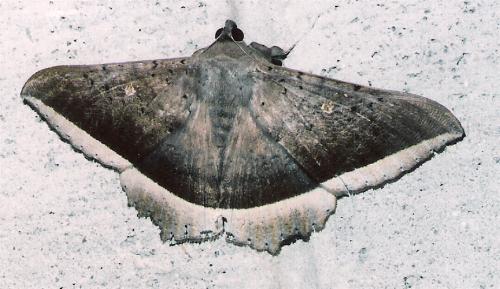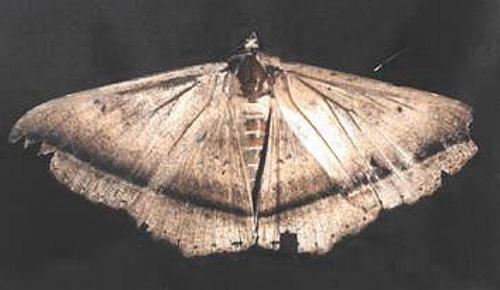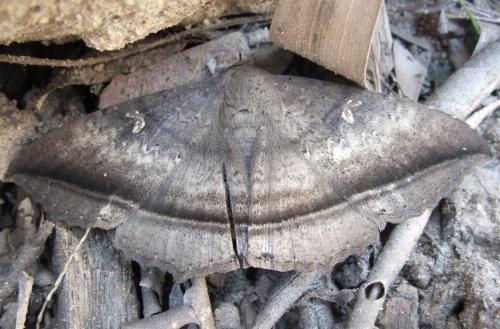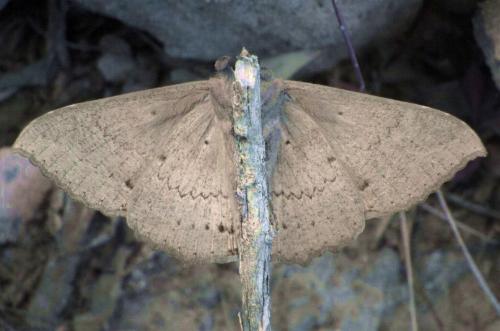
| (one synonym : Hypopyra fusifascia Walker, 1869) EREBINAE, EREBIDAE, NOCTUOIDEA | (donherbisonevans@yahoo.com) and Stella Crossley |

(Photo: Don Herbison-Evans, Bundaberg, Queensland)

| (one synonym : Hypopyra fusifascia Walker, 1869) EREBINAE, EREBIDAE, NOCTUOIDEA | (donherbisonevans@yahoo.com) and Stella Crossley |

(Photo: Don Herbison-Evans, Bundaberg, Queensland)
The Caterpillars of this moth feed on plants from the families:

The adult moth has fawn wings with a band of a different shade along the outer edge of each wing. The forewings each have a comma-shaped mark near the middle. The wing margins are scalloped. Each forewing tip is hooked, and each hindwing tornus is cusped. The moth has a wingspan of about 9 cms.

The species is found across south-east Asia, including:
and is also found in Australia in:

Further reading :
Ian F.B. Common,
Moths of Australia,
Melbourne University Press, 1990, fig. 45.7, p. 451.
Pieter Cramer,
Description de Papillons Exotiques,
Uitlandsche kapellen voorkomende in de drie waereld-deelen,
Amsterdam Baalde, Volume 3 (1782), p. 140, figs. E,F, and also
Plate 269, figs. E,F.
 caterpillar |  butterflies |  Lepidoptera |  moths |  caterpillar |
(updated 26 June 2010)